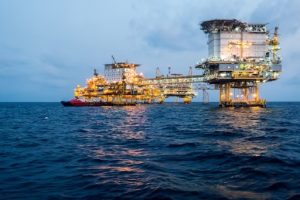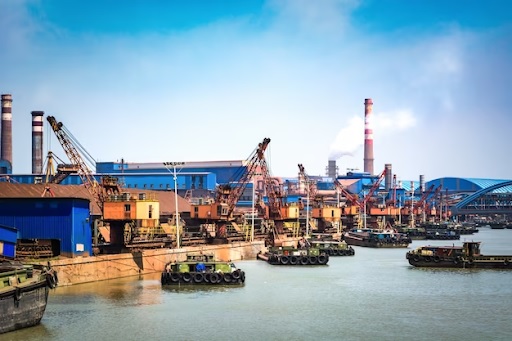In the global energy landscape, the efficient and reliable transportation of oil and gas plays a pivotal role in ensuring a steady supply to meet the world’s ever-growing demand. The intricate web of processes involved in oil and gas logistics encompasses exploration, extraction, transportation, and distribution. This article delves into the multifaceted world of oil and gas logistics, exploring the challenges, innovations, and the crucial role logistics plays in sustaining the lifeblood of the energy sector.
The Dynamics of Oil and Gas Logistics:
Oil and gas logistics is a complex and dynamic field that involves the movement of hydrocarbons from the source of production to various endpoints, including refineries, processing facilities, and distribution centers. The oil and gas logistics intricate processes demand meticulous planning, coordination, and adherence to stringent safety and environmental standards at every stage of the supply chain.
Exploration and Extraction:
- The journey begins with the exploration and extraction of oil and gas reserves. In remote and challenging locations, such as offshore drilling platforms and deep-sea operations, logistics become a critical factor. The transportation of personnel, equipment, and supplies to and from these sites requires strategic planning to overcome logistical hurdles.
Transportation Modes:
- Once extracted, crude oil and natural gas need to be transported to processing facilities or refineries. The transportation modes employed vary depending on the distance and geographical features. Pipelines, a common and cost-effective choice for overland transport, crisscross continents, while maritime shipping is integral for moving vast quantities of oil across oceans. Road and rail transportation also play roles in connecting extraction sites to other points in the supply chain.
Storage and Processing:
- At refineries or processing facilities, crude oil undergoes a series of transformations to produce various refined products, including gasoline, diesel, and petrochemicals. Efficient logistics are vital for the storage of crude oil and the movement of intermediate and final products within these facilities. Automated systems and advanced technologies help manage inventory and streamline the processing stages.

Distribution and Supply Chain Management:
- The distribution phase involves the movement of refined products from refineries to end-users. A robust supply chain management system is essential to optimize transportation routes, minimize transit times, and respond effectively to fluctuations in demand. Logistics providers play a critical role in coordinating the movement of products through pipelines, tankers, trucks, and railroads.
Challenges in Oil and Gas Logistics:
Geopolitical Considerations:
- The global nature of the oil and gas industry means that logistics are often influenced by geopolitical factors. Political instability, conflicts, and regulatory changes in key producing or transit regions can disrupt the flow of oil and gas, impacting logistics planning and execution.
Safety and Environmental Regulations:
- Stringent safety and environmental regulations govern the transportation of oil and gas. The industry must adhere to measures that minimize the risk of spills, leaks, and accidents during transportation, storage, and processing. Compliance with evolving regulatory frameworks adds complexity to logistics operations.
Infrastructure Challenges:
- Some oil and gas reserves are located in remote and challenging terrains, requiring substantial investments in infrastructure development. The absence of reliable transportation networks, storage facilities, and processing plants in these areas can impede efficient logistics and increase costs.
Fluctuating Demand and Prices:
- The oil and gas industry is characterized by fluctuating demand and prices, influenced by economic conditions, geopolitical events, and technological advancements. These fluctuations pose challenges for logistics planners who must adjust transportation routes, storage capacities, and distribution networks in response to market dynamics.
Innovations and Technological Advancements:
Advanced Analytics and Predictive Modeling:
- The integration of advanced analytics and predictive modeling has transformed logistics planning in the oil and gas sector. These tools help optimize transportation routes, predict equipment maintenance needs, and enhance overall supply chain efficiency. By leveraging real-time data, logistics providers can make informed decisions that minimize downtime and increase reliability.
IoT and Sensor Technologies:
- The Internet of Things (IoT) and sensor technologies have found applications throughout the oil and gas supply chain. IoT-enabled devices and sensors monitor equipment health, track the condition of pipelines, and provide real-time data on transportation and storage facilities. This data-driven approach enhances safety, reduces downtime, and allows for proactive maintenance.
Automation in Exploration and Extraction:
- Automation technologies are making significant inroads in the exploration and extraction phases. Unmanned aerial vehicles (UAVs) and remotely operated vehicles (ROVs) are used for surveying and inspecting extraction sites. Robotics and automation contribute to safer and more efficient operations, particularly in challenging environments.
Blockchain for Supply Chain Transparency:
- Blockchain technology is being explored for its potential to enhance transparency and traceability in the oil and gas supply chain. By creating an immutable and transparent ledger, blockchain can help verify the authenticity of transactions, ensure compliance with regulations, and reduce the risk of fraud and errors in logistics operations.
Digital Twin Technology:
- Digital twin technology creates virtual replicas of physical assets, allowing for real-time monitoring and analysis. In the oil and gas industry, digital twins are employed to simulate and optimize logistics processes, enabling better decision-making and enhancing the overall efficiency of the supply chain.
The Future of Oil and Gas Logistics in Singapore:
As a key player in the global energy market, Singapore has positioned itself as a hub for oil and gas logistics. The city-state’s strategic location, well-developed infrastructure, and commitment to technological advancements make it an ideal center for managing the movement of energy resources. Several trends and factors shape the future landscape of oil and gas logistics in Singapore:
Investments in Digitalization:
- Singapore is at the forefront of digitalization efforts in the oil and gas sector. Investments in smart technologies, data analytics, and automation are expected to enhance the efficiency of logistics operations, reducing costs and minimizing environmental impact.
Environmental Sustainability:
- Sustainability has become a key focus in the energy industry, and Singapore is aligning its logistics practices with environmental goals. The adoption of cleaner and more energy-efficient transportation modes, along with innovations in carbon-neutral logistics, is likely to shape the future of oil and gas logistics in the region.
Integration of Renewable Energy:
- As the global shift towards renewable energy gains momentum, Singapore is positioning itself as a hub for both traditional and renewable energy logistics. The integration of renewable energy sources, such as solar and hydrogen, will necessitate adjustments in logistics strategies to accommodate the changing nature of the energy mix.
Collaborative Initiatives:
- Collaborative efforts between industry stakeholders, government agencies, and research institutions are essential for addressing the challenges and opportunities in oil and gas logistics. Public-private partnerships, research collaborations, and knowledge-sharing initiatives can drive innovation and enhance the resilience of Singapore’s logistics ecosystem.
Oil and gas logistics, a critical component of the energy supply chain, navigates the complexities of extraction, transportation, and distribution to meet the world’s energy needs. In Singapore, a strategic hub in the global energy landscape, the industry is poised for further advancements driven by innovations in technology, digitalization, and a commitment to sustainability. As the dynamics of the oil and gas sector continue to evolve, the city-state’s role in managing the logistics of these vital resources will be central to ensuring a reliable and efficient flow of energy on a global scale.



